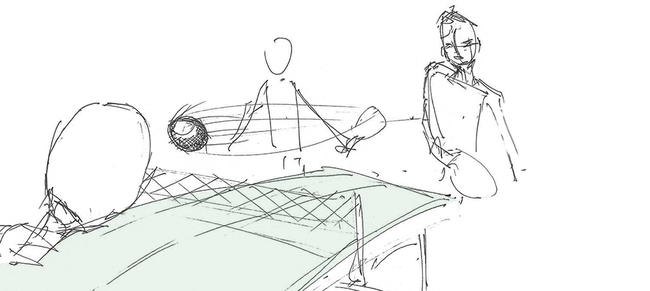Workspace Ownership
Although offices are almost always legally owned by a company, making the employees feel ownership comes with a lot of benefits.
If employees feel at home in the office they are more likely to share ideas and less likely to hold back constructive critisism (hide their candor), both of which are vital for the quality of the work delivered by the company.
To the employee, workspace ownership makes the difference between working for the company and being (part of) the company.
Decorating #
This is the most obvious way of feeling ownership, and probably also the easiest. When people bring personal items and items with sentimental value, the office starts feeling comfortable.
This doesn’t stop at a picture of the kids and a drawing. Encourage employees to decorate the walls, buy funny mugs (or GitHub beer glasses), and so on.
If it feels like initiative and creativity is encouraged in the workspace, it will automatically become part of the work, too.
Team Organization #
The organization into teams, and the relative physical placement of the teams impacts interaction. The relationship between teams, and the opinions of the members of the teams, should be taken into account when deciding who is going to sit next to whom.
Alternatively, an approachlike Valve’s moving desks (see the Valve Handbook for New Employees) can allow employees to choose their own surroundings (location as well as people).
Being comfortable with the people around them makes employees feel more free to speak their mind, without fear of repercussions. Having a rapport means moving faster towards the goal of making something great. Familiarity and candor go hand in hand.
Social Areas #
As we have just discussed, trust and familiarity should be encouraged. It follows that social interaction between employees, both casual and professional, should be encouraged.
Company lunch is one obvious way of having people from all departments meet and talk about something that isn’t necessarily work (but can be).
Lounge areas are great for casual meetings as well as allowing employees to have a chat in their break.
Pingpong and foosball tables give employees an excuse to get some exercise (which will boost their concentration and prolong the productive time of their day) as well as interact with other people.
Cross-departmental interaction is important, too, as it spurs on innovation and makes the whole company work together better. This should be remembered when deciding what interaction the spaces are designed for (eg. cross-departmental pingpong tournaments).
Architecture and Tools #
This may sound like it’s about software. It’s not (though I can’t blame anyone for assuming this—a post devoid of software content is a rarity on this blog). This is about architecture of buildings and physical tools and furniture.
For the workspace to feel like it belongs to the employees all of these things should be based on actual employee needs and wants. The desks and chairs should make sense for the kind of work that is done, and the employees should have a say in whether or not they should be changed.
Google have a slide in their offices. Yes, like a playground slide. It is used to get from one floor to another. Is it a good feature of the office? Yes. Should all companies get slides in their offices? No.
The slide fits Google’s youthful image, which in turn fits its youthful employees. A mismatch between architecture/furniture and employees makes the office feel forced, less like it belongs to the employees.
Further reading #
- I get the concept of (and focus on) candor from Ed Catmull’s fantastic Creativity, Inc. in which he talks about his experiences and lessons learned as President of Pixar. It also talks about how Steve Jobs designed the Pixar HQ to encourage serendipid interaction between people from different parts of the company.
- A lot of inspiration for workplace design can be found in the Valve Handbook for New Employees. In addition, I would recommend looking up interviews with Valve CEO Gabe Newell, especially those where he talks about company design.
- FastCompany hosted the Office Throwdown 2015, pitching the offices of several known tech companies against each other. The winners are chosen based on popularity amongst FastCompany readers, so the ranking of the offices should not weigh too heavily when deciding which ideas to adopt. The look around the offices can be used as inspiration, though.
